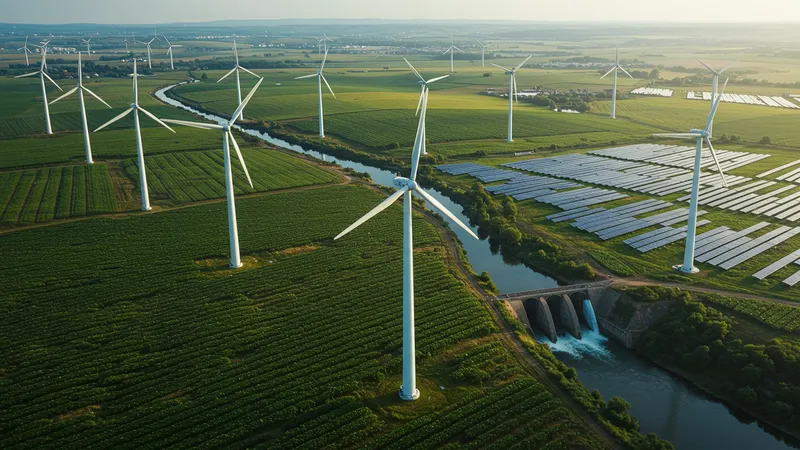
Renewable Energy Farms — Solar, Wind, Hydro & Biomass Solutions
Imagine landscapes dotted with panels, turbines, flowing water, or even fields of energy crops. These large-scale installations harness the power of nature to generate electricity using resources that renew themselves continually. Together, these sites mark one of the most significant innovations of the modern age: the development of massive farms designed explicitly to capture energy from sunlight, wind, moving water, and organic materials. The core concept behind these operations is to produce electric power, not by consuming fossil fuels, but by utilizing naturally replenishing sources — dramatically reducing emissions and offering cleaner alternatives for communities and industries worldwide.
The flexibility and reach of these energy farms is remarkable. They range from thousands of solar panels tracking the sun across silent fields to wind turbines aligning with the breeze along sweeping coastlines. Some use flowing water to spin huge turbines or convert agricultural waste into fuel. The shared goal across all these farms is simple: reliably deliver renewable electricity at scale. Over the years, they have become essential contributors to global energy grids, showing how diverse resources can feed the world’s soaring appetite for power — with less environmental impact.

- Tengger Desert Solar Park — One of the largest solar arrays, producing approximately 1,500 MW; estimated installation costs around $1.3 billion.
- Gansu Wind Farm — Vast wind power complex reaching 8,000 MW; construction costs reported at over $17 billion.
- Robert-Bourassa Generating Station — Hydroelectric facility in Canada generating 5,616 MW; estimated build cost was over $4 billion.
- Drax Biomass Power Station — Major biomass generation site in the UK with capacity of 3,906 MW; conversion investment exceeded $1 billion.
Each of these renewable installations operates at a scale rivaling or even surpassing traditional power plants. For instance, the Tengger Desert Solar Park spans over 43 square kilometers — an area large enough to be seen from space. Meanwhile, Gansu’s wind complex demonstrates how a single region can transform wind currents into a core pillar of its electricity supply. Hydroelectric and biomass stations have additionally adapted established energy infrastructure to tap into the promise of renewable feedstocks, providing lessons for both new development and historic retrofits.
The environmental gains from these installations are noteworthy. Large-scale solar parks and wind farms can reduce annual carbon dioxide emissions by millions of tons compared to coal-powered facilities of similar output. Hydropower and biomass also contribute by using water cycles and waste products, further supporting net-zero ambitions. Interestingly, ongoing research hints that pairing different sources — like solar panels with wind turbines — can enhance grid reliability and efficiency by smoothing out fluctuations from each technology.
Yet challenges remain when it comes to land use, transmission connections, and community integration. Developers must balance the need for vast open spaces with considerations for agriculture, conservation, and local support. The future likely includes smarter site selection, partnerships with farmers, and innovative use of existing infrastructure to minimize both costs and impacts. Biomass projects in particular are evolving, seeking sustainable sources without putting pressure on food supplies or forests.
Globally, energy generated by these renewable farms is growing quickly. Many countries report that clean sources now account for over a quarter of their grid supply, with some surpassing 50%. The pace is accelerating, thanks in part to plummeting costs for solar panels and wind turbines, as well as policies supporting clean investment. Yet the journey from pilot project to grid-dominating powerhouse is complex — and the most revealing lessons are just beginning to emerge. The deeper details reveal even more valuable insights ahead…